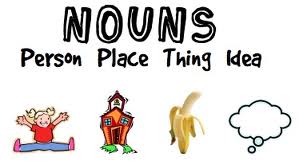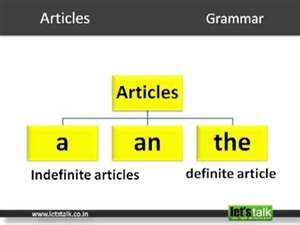
SPC-ELL: Nouns and Articles
Self-Paced Collection of English Language Lessons
You must "Allow Blocked Content" on your computer to complete this SoftChalk Lesson. Click on the arrow if you want to listen as you read.
Read the following paragraph. Do you notice any problems?
Story of Coca-Cola
Popular beverage that is sold all over world is Coca-Cola. Doctor who lived in Atlanta, Georgia, invented it in 1886. Dr. John Pemberton, who was pharmacist, first sold Coca-Cola as nerve tonic, stimulant, and headache medicine. Name of dark brown syrup that made people feel better was "Pemberton's French Wine Coca." Later someone added soda water to syrup and it became beverage that is our modern Coca-Cola. First part of name (coca) comes from cocaine, which was one of original ingredients. Second part of name (cola) comes from kola nut, which is still ingredient. Original formula has changed over years. Of course Coca-Cola no longer contains cocaine, which is illegal drug, but it still tastes delicious. Formula for Coca-Cola is secret that is carefully guarded.
Adapted from First Steps in Academic Writing, Level 2 by Anne Hogue, 2008.
What is wrong with this paragraph?

At the end of this lesson, you should be able to:
(Be sure to read each page and complete all the activities.)
In order to talk about article rules in English, we first need to know about nouns.


Nouns are words for people, places, things, or ideas. This lesson will focus on 3 kinds of nouns:
|
Singular |
Plural |
Non-Count |
|---|---|---|
|
boy, dog, man, school, neighborhood, mouse, box, baby, tooth |
boys, dogs, men, schools, neighborhoods, mice, boxes, babies, teeth |
water, coffee, sugar, furniture, jewelry, junk, news, tennis, rice, hair, homework, intelligence, information, grammar, swimming, pollution |
1. Regular Nouns: the plural of most regular nouns is formed by adding -s:
|
Singular |
Plural |
|---|---|
|
song |
songs |
|
book |
books |
|
school |
schools |
|
girl |
girls |
|
computer |
computers |
The plural of nouns that end in a consonant + y is formed by deleting -y and adding -ies:
|
Singular |
Plural |
|---|---|
|
baby |
babies |
|
party |
parties |
|
salary |
salaries |
The plural of nouns that end in -sh, -ch, -s, -z, and -x is formed by adding -es:
|
Singular |
Plural |
|---|---|
|
box |
boxes |
|
class |
classes |
|
wish |
wishes |
|
glass |
glasses |
|
watch |
watches |
2. Irregular Nouns: some nouns have irregular plural forms.
(You will need to consult a grammar book for all the rules.)
Here are a few examples:
|
Singular |
Plural |
|---|---|
|
man |
men |
|
child |
children |
|
foot |
feet |
|
tooth |
teeth |
Non-count nouns have no plural form.
Example:
NO: Yesterday, I bought a ring, a necklace, and some earrings. My new jewelries are beautiful.
YES: Yesterday, I bought a ring, a necklace, and some earrings. My new pieces of jewelry are beautiful.
NO: My teacher gave us three homeworks last week.
YES: My teacher gave us three homework assignments last week.
Try this Sorting Activity to practice.
Nouns are often the subject of a sentence; however, they can also function as a direct or indirect object.
Example sentences:
Check your understanding: Try this "Quiz" Activity to practice identifying subjects and objects in a sentence.

Look at the following sentences. Two of the sentences below are incorrect. Can you tell which two are wrong?
Try the Quiz Group activity below to see which TWO sentences use articles incorrectly. (This quiz is for practice only. Your answers will not count in your grade. All other quizzes & activities DO count in your grade.)

Watch this video for an explanation of article rules.
Go to the next page and do the practice.
Which article should you choose: the, a, an, Ø?
|
the = definite article (use with singular or plural nouns, sometimes with non-count nouns) |
a, an = indefinite articles (ONLY use with singular nouns) |
Ø = "zero" article (use with non-count or plural nouns) |
|---|---|---|
|
1. use when referring to something specific (singular or plural)
2. use with singular count nouns the second time you mention it |
3. use with a singular count noun to make general statements
4. use with a singular count noun the first time you mention it |
5. use with non-count nouns to make general statements, unless you want to be very specific
6. use with plural count nouns to make general statements |
Read the rules and then try the 3 activities below.

Try this quiz again (it is the same as page 8). This time your answers will be counted!

Test Yourself: Read the paragraph again from page 1 and decide which article is needed: the, a, an, Ø.
Click on the Quiz Group below to answer the questions.
1.___ Story of Coca-Cola
2.___ popular beverage that is sold all over 3.___ world is Coca-Cola. 4.___ doctor who lived in Atlanta, Georgia, invented it in 1886. Dr. John Pemberton, who was 5.___ pharmacist, first sold Coca-Cola as 6.___ nerve tonic, stimulant, and headache medicine. 7.___ name of 8.___ dark brown syrup that made people feel better was "Pemberton's French Wine Coca." Later someone added soda water to 9.___ syrup and it became 10.___ beverage that is our modern Coca-Cola. 11.___ first part of 12.___ name (coca) comes from cocaine, which was one of 13.___ original ingredients. 14.___ second part of 15.___ name (cola) comes from kola nut, which is still 16.___ ingredient. 17.___ original formula has changed over 18.___ years. Of course Coca-Cola no longer contains cocaine, which is 19.___ illegal drug, but it still tastes delicious. 20.___ formula for Coca-Cola is 21.___ secret that is carefully guarded.
Adapted from First Steps in Academic Writing, Level 2 by Anne Hogue, 2008.

Congratulations! You are now an expert on nouns and articles in English!
Make sure you have completed all the activities and quiz questions. Then, go to the last page to submit your scores.
Folse, K., (2009). Keys to Teaching Grammar to English Language Learners: A Practical Handbook. Ann Arbor: University of Michigan Press.
Azar, B. & Hagen, S., (2009). Understanding and Using English Grammar (4th Edition). White Plains, NY: Pearson Longman.